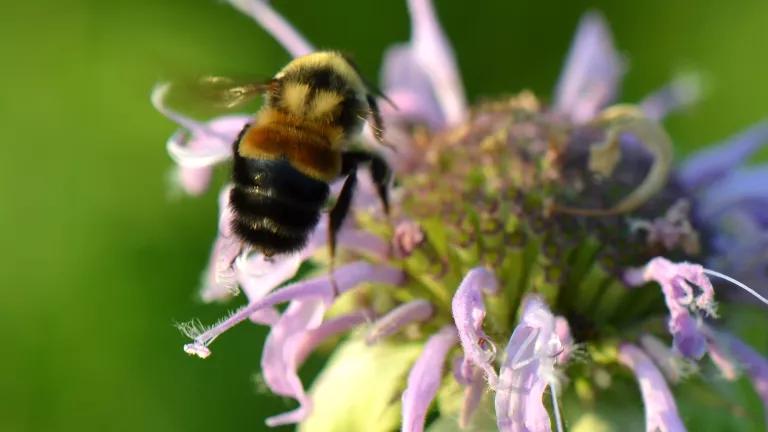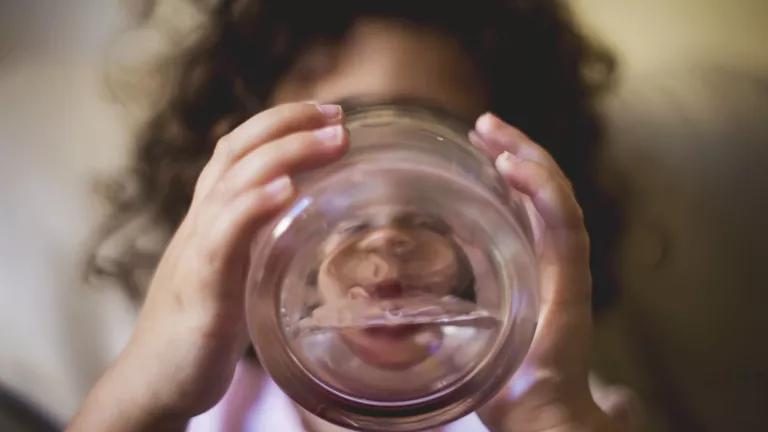UPDATED: Science, Polling Support NY Bill to Save Bees
Senator Brad Hoylman introduced new language today for the Birds and Bees Protection Act, a bill that would make the state a national leader in safeguarding its bees, birds, water, and people from widespread neonicotinoid pesticide contamination.

Birds, Bees, and Butterflies would all benefit from a renewed New York bill.
New York Senator Brad Hoylman and Assemblyman Steve Englebright have introduced a renewed version of the Birds and Bees Protection Act (A7429/S699B)—a bill that would make New York a national leader in protecting its pollinators, people, and water against widespread pollution from neurotoxic neonicotinoid pesticides ("neonics"). (To TAKE ACTION in support of the bill click here).
The Act’s focus on eliminating low-to-no benefit neonic uses—which account for the vast bulk of the harmful pesticides entering the state’s environment—finds strong support in the conclusions of a recent groundbreaking Cornell University report. It also finds support from an overwhelming number of New Yorkers who want to see neonic pesticides reined in. Polling commissioned by NRDC and Friends of the Earth shows that a broad majority of New Yorkers support increased protection of bees, birds, and other pollinators as well as dramatic decreases in the neonic pesticides driving massive pollinator declines and vast contamination of New York soil and water.
Since the mid-1990s, neonics have made U.S. agriculture 48-times more harmful to insects and been linked with massive losses of bees. New York beekeepers now typically lose an astounding 40% or more of their hives every year—likely “canaries in the coalmine” for New York’s 400+ species of wild bees, which undergird ecosystems and are also important crop pollinators. Further losses pose big risks to the state’s environment and an estimated $439 million worth of pollination services to top crops like apples, squash, blueberries, and cherries.
Neonics are also all over New York water (including nearly a third Long Island groundwater samples) at levels linked to losses of birds, the collapse of fisheries, and birth defects in white-tailed deer.
According to the poll, 66% of New Yorkers support stronger state regulations of neonics (37% strong support) when first asked. Even after hearing arguments in opposition to tougher regulations, total support for regulation actually increased to 75% (26% strong), a dramatic 3-1 split. Support increased even further when respondents heard positive messaging after the negative messaging—to an overwhelming 80% (40% strong).
The poll also showed increasing concern over the pesticides’ impact to human health. While 53% of New Yorkers felt information on neonics’ impact on bee populations is very convincing, 51% felt the same regarding information on neonics and human health. Those potential impacts have been highlighted in recent studies linking neonics to developmental harms in people and a range of harms in other mammals (see health expert Jen Sass’s wrap up of all that science here). Because recent CDC monitoring shows half of Americans are regularly exposed to neonics, any possible neonic harms could be widespread.

New Yorkers agree: More needs to be done to save birds and bees from dangerous neonic pesticides.
As the Cornell report highlights, the vast majority of neonics going into New York’s environment either: (1) provide little-to-no benefits to users; or (2) are easily replaced with safer alternatives. That means the heart of New York’s neonic problem can be addressed by restricting these needless uses, likely saving users money without resulting in a switch to more harmful pesticides.
And that’s exactly what the new Birds and Bees Protection Act does, specifically by:
- Banning neonic-treated corn, soybean, and wheat seeds, which account for about three-quarters of the neonics used in New York agriculture. According to Cornell, these treated seeds pose “substantial” risks to bees, but provide “no overall net income benefits” to farmers;
- Banning ornamental and turf (AKA, “cosmetic”) neonic uses commonplace on lawns, golf courses, and manicured corporate gardens across the state. The Cornell report finds that these uses pose some of the highest risks to pollinators, yet are largely unneeded or replaceable with safer alternatives;
- Requiring the state take a hard look at other neonic uses and, where appropriate, designate them as “restricted use pesticides” with any necessary restrictions for protection of New York’s bee and bird populations.
The bill also contains two state-controlled exemptions, allowing the state Department of Environmental Conservation to permit neonic use against invasive species, such as hemlock wooly adelgid, and suspend the ban for a particular treated seed type if untreated seed is commercially unavailable or its purchase would impose unreasonable costs on farmers.
All and all, the new Birds and Bees Protection Act responds to the desires of New Yorkers to rein in bee-killing neonic uses while doing so in a targeted, commonsense, science-driven manner. While not as broad as neonics bans advanced in the European Union or Canada, the bill is expertly tailored to address New York’s problematic neonic uses in a way that benefits the state’s birds, fish, farmers, residents, and—of course—bees.
NRDC strongly supports the bill and you can too. If you live in New York, you can take action to make the Empire State a national leader in pollinator protection.




